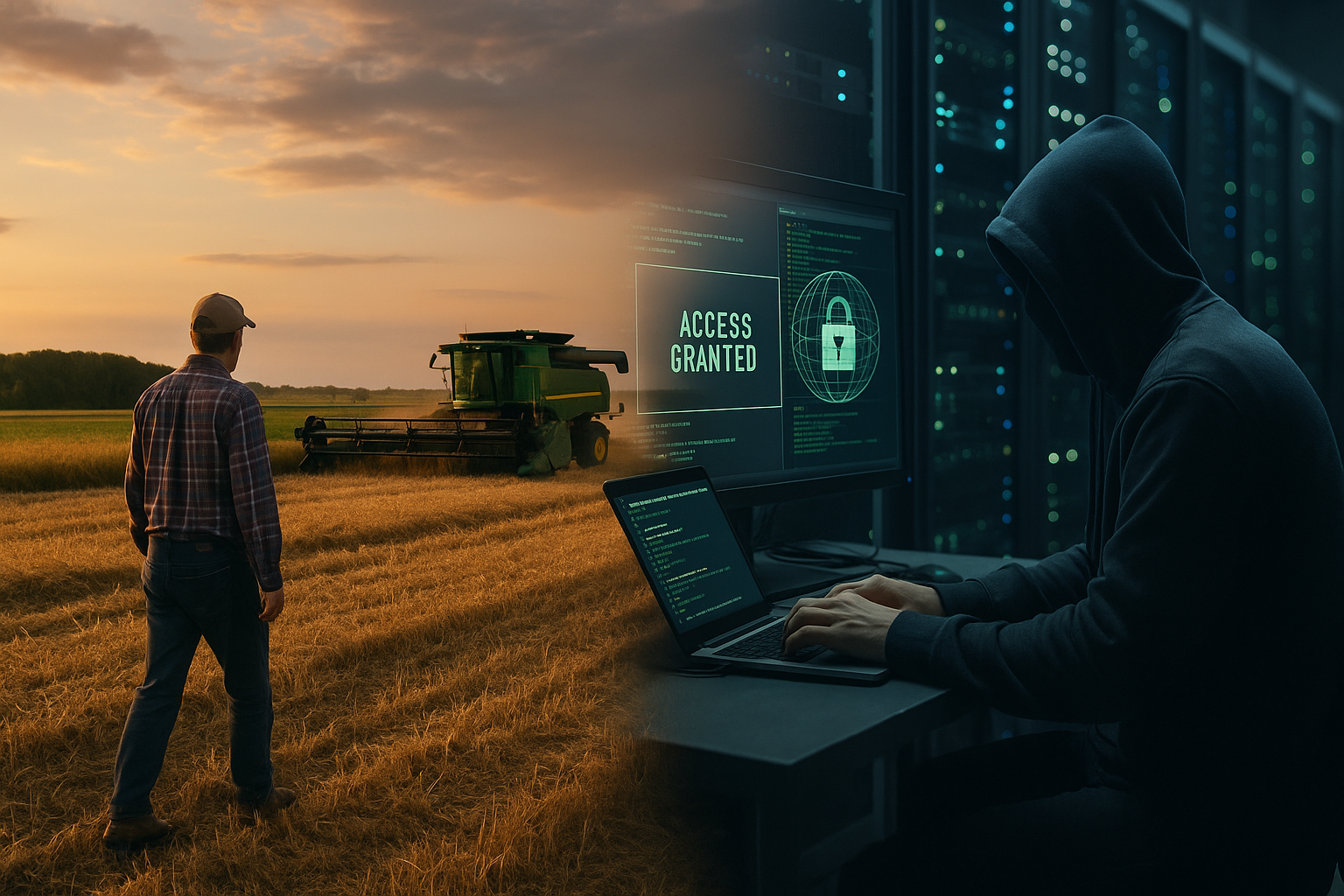From Fields to Servers: Cybercrime’s Growing Grip on the Global Food Industry
The study by researchers from the University of Missouri–St. Louis, the University of North Dakota, and Virginia Tech warns that cyberattacks on the food and agriculture sector—ranging from ransomware to data breaches—have surged over the past decade, crippling global supply chains and causing multimillion-dollar losses. It urges urgent adoption of cybersecurity frameworks, AI-driven defenses, and public–private cooperation to safeguard food security in the digital age.

The paper, authored by researchers from the University of Missouri–St. Louis, the University of North Dakota, and Virginia Tech, shines a harsh light on one of the least-discussed but fast-growing threats to global security: cyberattacks on the food and agriculture sector. Covering incidents between 2011 and April 2023, the survey shows how farms, food processors, and distribution chains have become highly vulnerable as digital tools, data systems, and automated processes spread across agriculture. In just a decade, the field once seen as “low-tech” has become a target for hackers, who recognize the devastating power of disrupting food supply chains. The researchers identify thirty major malicious incidents, ranging from ransomware to data breaches, and warn that these are no longer isolated accidents but a systemic threat to food security.
Costly Attacks That Shook Global Brands
The documented incidents involve some of the world’s most recognizable names. In 2013, Target’s massive data breach cost the company more than $200 million and revealed how food-related retail operations could be exploited as weak links. Monsanto, Wendy’s, and Chipotle all fell victim to data compromises, with Chipotle’s 2017 payment system breach severely damaging consumer confidence. Mondelez International was struck by the NotPetya malware in 2017, leading to losses of around $180 million as shipping systems ground to a halt. Later, Americold Logistics, one of the largest cold storage operators, suffered repeated ransomware attacks in 2020 and again in 2023, halting food shipments and creating bottlenecks in supermarket supply chains. In 2021, the stakes grew higher when JBS Foods, the world’s largest meat processor, was forced to pay an $11 million ransom to resume operations after shutdowns disrupted meat supplies across multiple countries. Even fresh produce giant Dole plc fell victim in 2023, causing shortages of packaged salads in U.S. stores.
The Growing Shadow of Ransomware
Looking at the timeline of incidents, a disturbing pattern emerges. Ransomware dominates the list, with eighteen of the thirty major attacks falling into this category. The surge began around 2017 and reached a peak in 2021, coinciding with a global rise in ransomware targeting critical infrastructure. Unlike simple data breaches, ransomware paralyzes operations, forcing companies into ransom payments or long shutdowns. Americold’s disrupted distribution, JBS’s halted meat processing, and irrigation system hacks in Israel underline the fragility of food supply chains when targeted by digital sabotage. Data breaches and denial-of-service attacks may be less frequent, but their impact is often enduring, eroding customer trust and tarnishing brand reputations. For instance, Chipotle and Wendy’s both struggled for years to regain consumer confidence after their payment systems were compromised.
Frameworks and the Search for Resilience
To meet these escalating threats, the authors turn to the tools of modern cybersecurity. They review existing frameworks, including the NIST Cybersecurity Framework 2.0, ISO/IEC 27000 standards, the CIS benchmarks, and MITRE’s ATT&CK model. These are designed to help organizations identify risks, protect assets, detect intrusions, respond quickly, and recover from attacks. Yet in agriculture, adoption remains uneven. Large multinationals may be able to integrate such frameworks and absorb losses, but small to medium operators, such as regional grain cooperatives or food distributors, often lack the resources or expertise to implement them. A single attack can push these businesses to the brink of collapse. This imbalance leaves gaping holes in the sector’s defenses, with the potential for local attacks to ripple into national or even international supply crises.
AI, Innovation, and the Human Factor
Emerging technologies offer glimmers of hope. Artificial intelligence and machine learning, already transforming precision agriculture, are being tested as cybersecurity shields. Hybrid models such as CNN-LSTM and federated learning have shown over 99 percent accuracy in experimental setups, detecting anomalies that might signal intrusions. Drone-based monitoring systems are now incorporating blockchain and deep learning to secure aerial crop data. These innovations could, in theory, revolutionize agricultural cybersecurity. But in practice, the paper warns, most remain confined to labs and pilot projects. Farmers and mid-level operators often hesitate to embrace opaque AI-driven solutions without guarantees of transparency and accountability. The researchers stress the need for AI assurance frameworks, mechanisms that build trust by ensuring systems are reliable, interpretable, and farmer-inclusive. Without such measures, adoption will stall, and the gap between cutting-edge research and practical protection will widen.
A Call to Treat Cybersecurity as Food Security
The authors close with a stark warning: ignoring cybersecurity in agriculture risks more than company losses. Food supply chains are global, interconnected, and fragile; a successful attack in one country can create shortages or price shocks in another. Cybersecurity, in this context, is inseparable from food security. Policymakers, industry leaders, and farmers must treat resilience to digital threats as essential as resistance to pests, droughts, or climate extremes. The call is not just for frameworks and technologies but for investment in training, awareness, and public–private partnerships that strengthen defenses across the sector. With agriculture increasingly dependent on data-driven tools, resilience against cyberattacks will define its ability to feed a growing world. The research makes clear that in the digital age, safeguarding farms and food companies from hackers is no less important than protecting crops from disease.
- FIRST PUBLISHED IN:
- Devdiscourse










